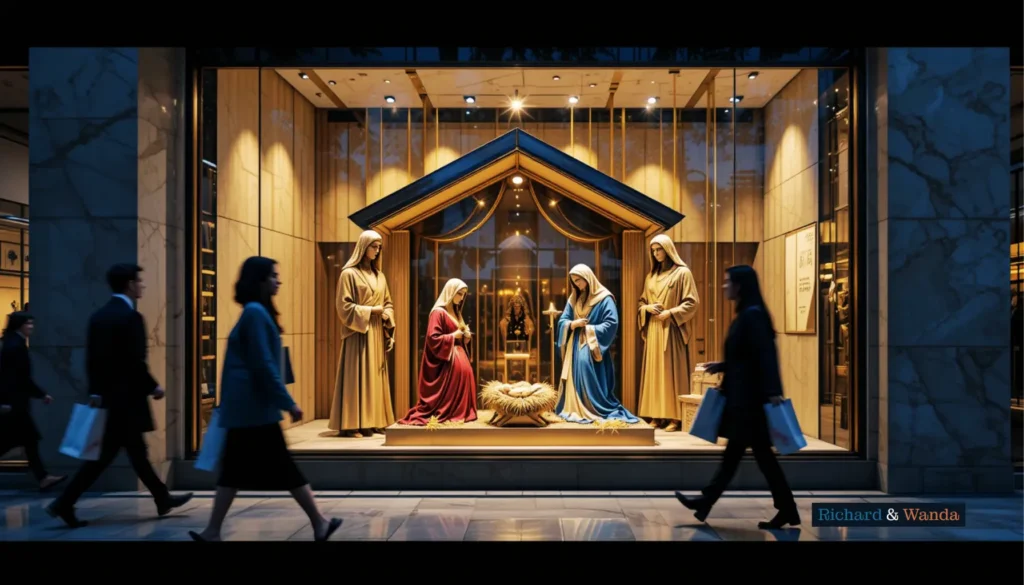In “The Wise Man’s Gold”,
We are reminded that incorporating Biblical themes into advertising campaigns can be like mixing oil and water.
Commercial ads have one principal goal and that is to generate dollars. To do that they must instill in the public a positive image for their company and a specific product line or service. That may involve half-truths and misleading statements.
For example, sweeping promises may accompany the release of a patent medicine which upon close examination is discovered not to have been tested or certified by the Food and Drug Administration. But since the TV promotion employs a happy photogenic family with a baby and a Golden Retriever, the audience is left with a very positive impression.
Motivational psychological research has determined that buyers have subconscious reactions to different packaging colors, and these may override the quality of the product inside.
Phil, in “The Red and Green Blues”, confirms that the practice of money-grubbing can and does infect commercial activity. It’s a good thing that these values never invade the practices of religious denominations, where ethical guidelines are stringently enforced. Right?
No one would ever think of using the birth of Jesus to remind travelers to book lodging ahead of time so they would not discover that there was no room at the Inn. And surely pink ceramic trees a foot tall were just what was necessary to make a buyer think reverently of the Nativity.
Well, okay, maybe not. Just ask Bill in “Friend, are you saved?” He was subjected to door-to-door hard-sell by the Deacon with a “board-room sales pitch”, and shortly thereafter by a technique akin to “love-bombing” administered by four beautiful women. There were no babies or dogs, but the idea was the same: use any means necessary to get a quick, emotional commitment that might be difficult to rescind.
If Jay Josephson’s Tillers in “A Way Through the Darkness” had adopted the approach recommended by Bill’s visitors, they might have demanded that the water and crackers be traded in return for Church membership.
Of course, the commercial advertisers would simply have sold the snacks – and maybe let you play with the Golden Retriever.
POST NOTE FROM THE EDITOR: Wanda Oberdorfer
Religious symbolism in marketing
The appeal of media blitzes can overwhelm us; especially, when they are packaged as emotional appeals drawing on our cute puppy hugs and kisses weak spot. Much of what we become is based on our vulnerability, Our religious faith remains a most vulnerable component of our lives. Is it a commodity that can be bought or sold? Religion has now become it’s own commodity—Religious symbolism in marketing scrolls daily on the Internet. Some of the posts offer a way to bring good to the world. Some of the posts seek to narrow the confines of whom should be included in that good, How we choose to be citizens of good works and selfless caring involves self-examination and effort to want to understand what faith and values your neighbor practices. Do you know your neighbors? Their names? Their children? What they do for fun? What religion they practice? Are they okay financially? Do they need help? Anyone ill? Could you run to the grocery store for them? Can you drive them to a doctor’s appointment? Do you have family dinners together? Do you ever just sit on the porch with your neighbor and talk about the good that is in this world? Do you support each other in times of need? Whether you bring the light of goodness into this world one neighbor at a time or through community service, your faith serves to bring goodness to others.
